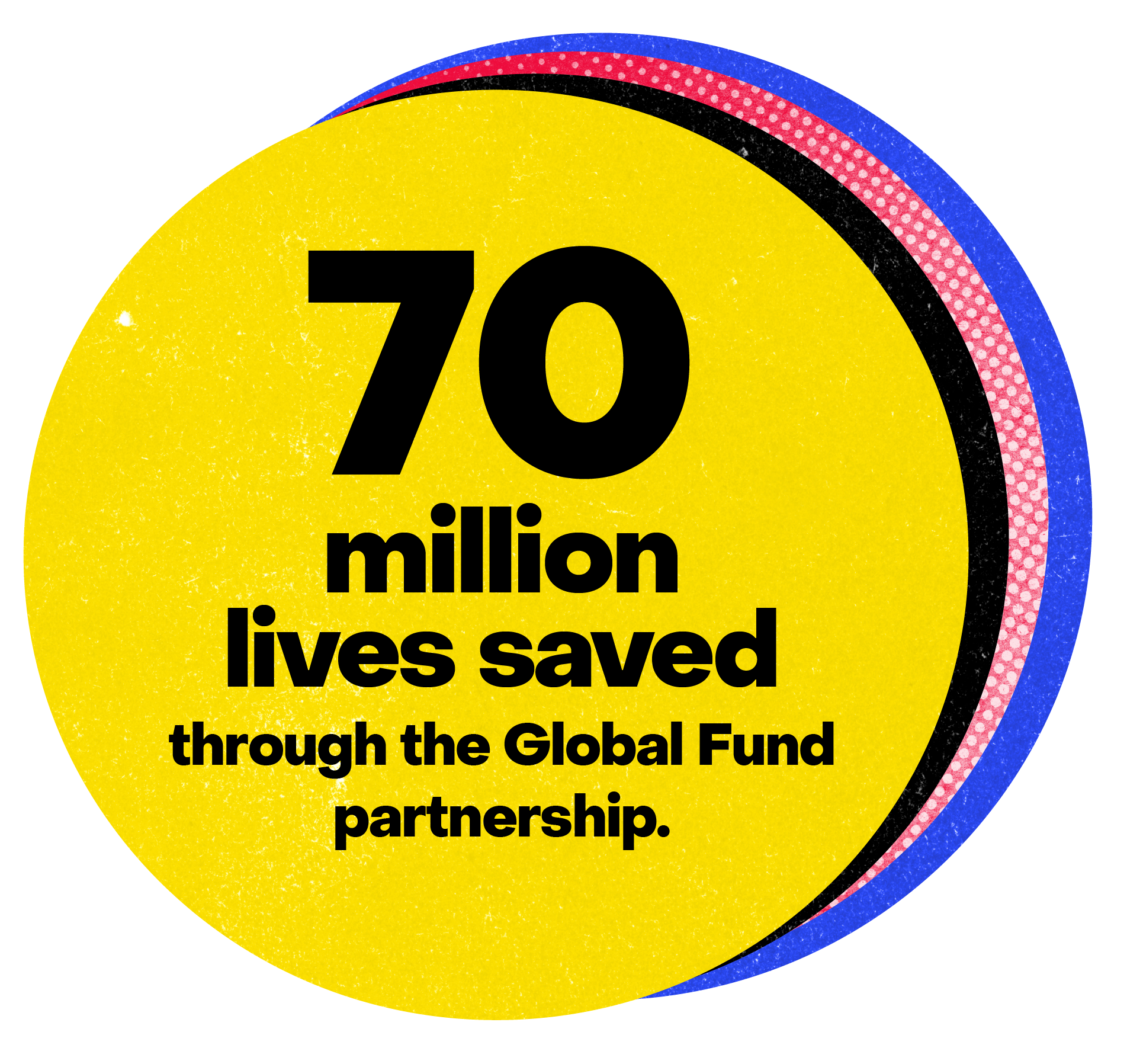September 10, 2025
New report: Global Fund partnership has saved 70 million lives since 2002
The Global Fund partnership has saved 70 million lives since 2002, reducing the combined death rate from AIDS, tuberculosis and malaria by 63%

AIDS: 25.6 million people were on antiretroviral therapy for HIV in 2024, up from 17.5 million in 2017. Coverage increased from 22% in 2010 to 79% in 2024.
The Global Fund has joined PEPFAR in a commitment to reach 2 million people with lenacapavir, a twice-yearly, long-acting injectable that has demonstrated up to 100% success in preventing new HIV infections. In mid-2025, the Global Fund signed an access agreement with Gilead Sciences to procure lenacapavir for low- and middle-income countries where the Global Fund invests. For the very first time, an HIV prevention product will launch simultaneously in low-income countries and in high-income countries.
TB: 7.4 million people were treated for TB in 2024. The Global Fund has also invested over $193 million between 2021-2025 to roll out AI-enabled TB screening tools – such as AI powered computer-aided detection software and digital portable chest X-rays – in more than 20 countries. AI is not only a tool that can help beat TB, but also a platform that can power a much more efficient use of resources, support integrated service delivery and strengthen pandemic preparedness.
Malaria: In 2024, 162 million insecticide-treated mosquito nets were distributed to protect families from malaria and 50.9 million children received seasonal malaria chemoprevention to prevent the disease from developing.
How the Global Fund invests for greatest impact
Supports countries as they transition to domestic disease responses. The Global Fund encourages, supports and incentivizes countries to transition to domestic resources, but then steps back as countries take full ownership. Since 2002, 52 HIV, TB and malaria disease programs across 38 countries have transitioned from the Global Fund. In the current financing cycle, we will see the largest transition from Global Fund support to date – 12 programs from eight countries.
For example, the Malaysian government has committed to fully finance its HIV response by 2028 and is now funding over 60 nongovernmental organizations through domestic financing.
To further facilitate transition, the Global Fund will continue to engage with implementing country governments and development bank partners to execute blended finance, Debt2Health swaps and other innovative finance mechanisms. For example, the Global Fund has recently approved blended financing transactions in Colombia, Côte d’Ivoire, Laos and South Sudan to support a wide variety of programmatic priorities, including community-based malaria control and prevention, access to antiretroviral therapy for vulnerable populations and improved primary care service delivery.
Efficient and effective. The Global Fund consistently maintains one of the lowest – if not the lowest – operating cost ratio in the global health sector, with tight control of implementing partner management costs, highly efficient procurement systems and proven market-shaping capabilities. The Global Fund Secretariat’s operating expenses have been reducing progressively over time, averaging 6%. The Global Fund leverages its purchasing power to shape markets and drive down prices, ensuring that game-changing innovations reach the people most in need. For example, when the Global Fund partnership was created, the cost of antiretroviral therapy for one person for one year was around $10,000. By 2018 this cost had been cut to $75, and today it is as low as $35.
Accelerating access to innovations. The Global Fund ensures countries get the products, regulatory approval, technical guidance and implementation support they need for the effective deployment of new tools. Innovations, such as long-acting prevention tools for HIV, new diagnostics for TB and more effective mosquito nets for malaria, will enable the Global Fund to squeeze greater impact from every dollar.
As an integral part of its market-shaping approach, the Global Fund is also supporting the sustainable development of regionalized manufacturing to improve the supply of key commodities. In 2025, this effort saw a major milestone: the first procurement of African-manufactured antiretroviral drugs for use in another country.
Sharpening the focus on the poorest and most vulnerable. In 2024, the Global Fund launched pilot initiatives in Zambia, Nigeria and Côte d’Ivoire to leverage grant funding to extend coverage of health financing schemes to poor and vulnerable populations. This ensures Global Fund support is concentrated where there is greatest need and where the capacity to pay is lowest.
Learn more: Results Report 2025
